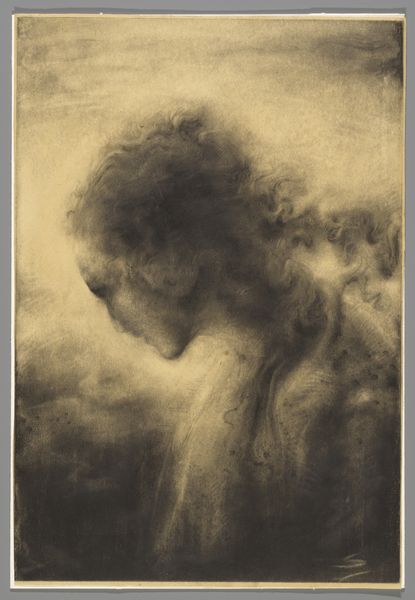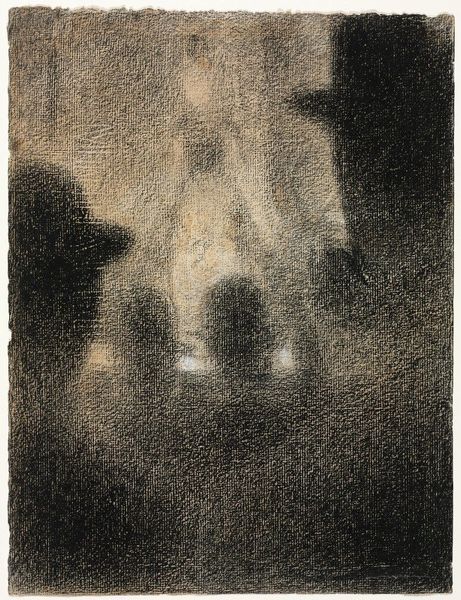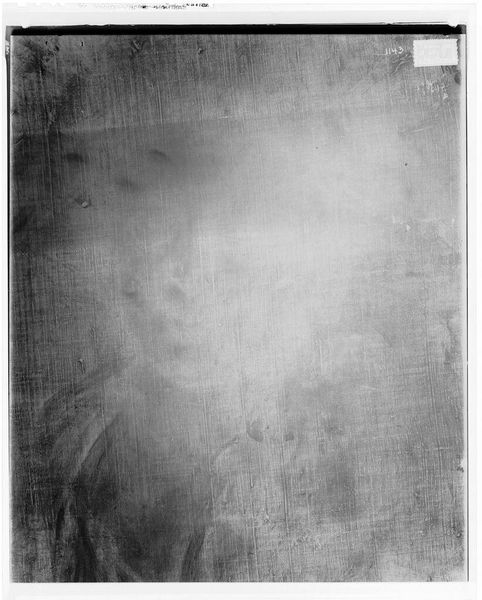
Dimensions: 625 × 478 mm
Copyright: Public Domain
Editor: Here we have Charles Angrand's "Head of a Child (Emmanuel)," made in 1898. It’s a drawing, or perhaps a print, on paper, and it's striking how the artist creates such a soft, almost dreamlike image with a monochrome palette. What’s your interpretation of this work? Curator: Angrand created a moving image that speaks volumes about childhood and representation at the fin de siècle. Given its date, I can’t help but situate the work within contemporaneous debates surrounding childhood, class, and anxieties about the future. Does the softness you mentioned convey vulnerability or innocence, or is there something else at play? Consider the implications of depicting a child, Emmanuel, so ethereally. Is it an idealization? A comment on the precarity of youth, especially in a rapidly changing society marked by industrialization and social upheaval? Editor: That's fascinating. I hadn't considered the societal anxieties. I was just thinking about how the soft lines and monochrome palette give it a timeless quality. Curator: Exactly! And what does timelessness signify? For whom? Knowing that Angrand was associated with Neo-Impressionist and anarchist circles, we should consider his potential critique of bourgeois sentimentalism. The title, "Head of a Child (Emmanuel)," adds another layer. Emmanuel means "God is with us," suggesting perhaps a utopian vision of childhood, or perhaps highlighting its distance from reality. How might that relate to his politics? Editor: I see. So, it's not just a sweet portrait; it’s also a commentary on society’s expectations and perhaps failures related to children. Thanks for pointing that out. Curator: Precisely. By understanding the socio-political context, we reveal the artwork’s potential to act as social commentary, which fosters critical thinking, empathy, and a more comprehensive understanding of art's role within society.
Comments
No comments
Be the first to comment and join the conversation on the ultimate creative platform.













